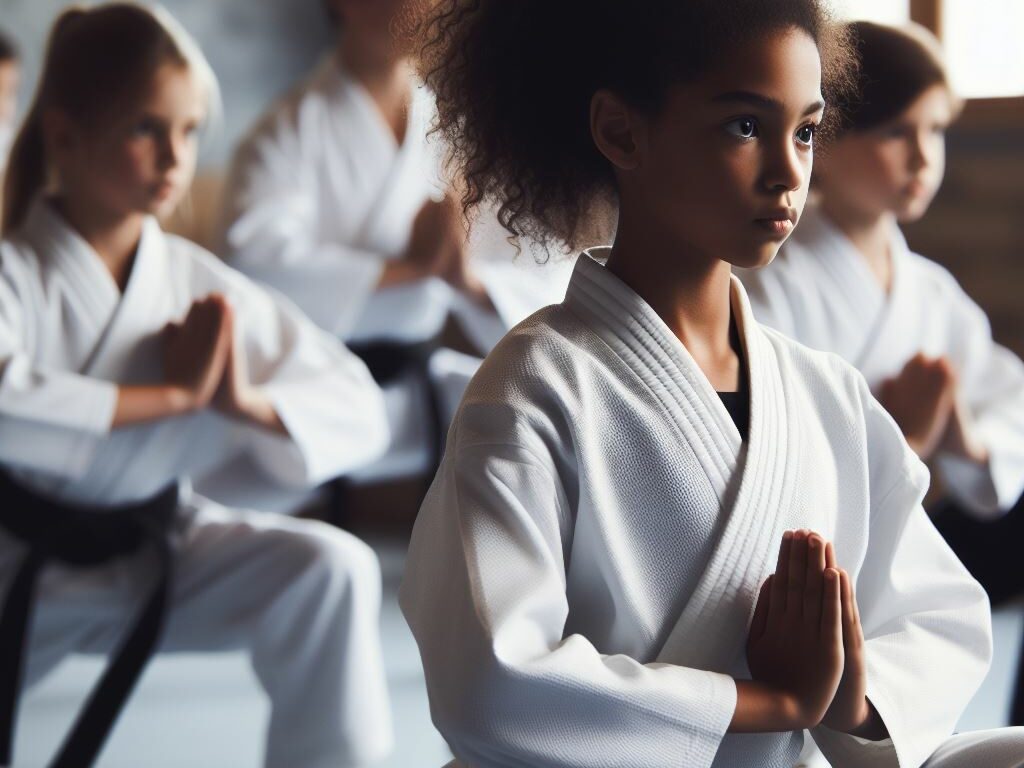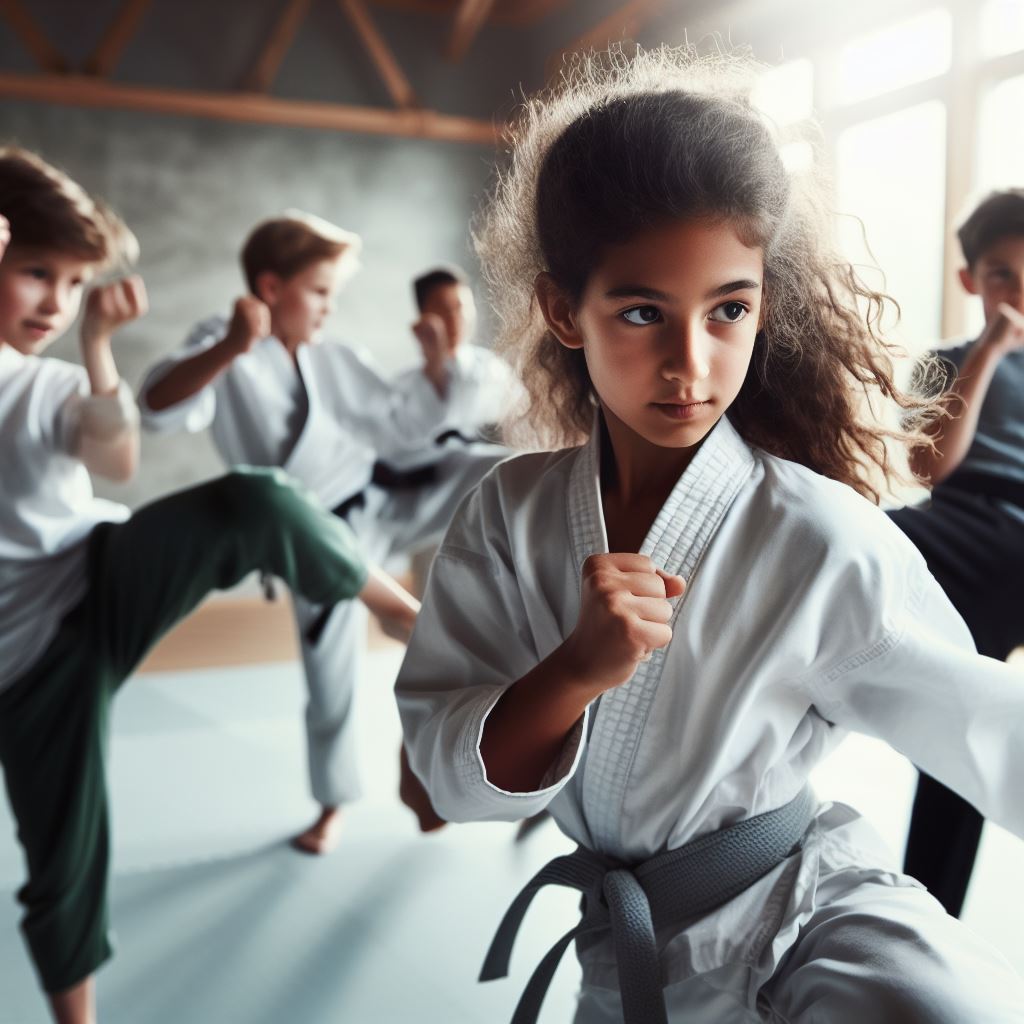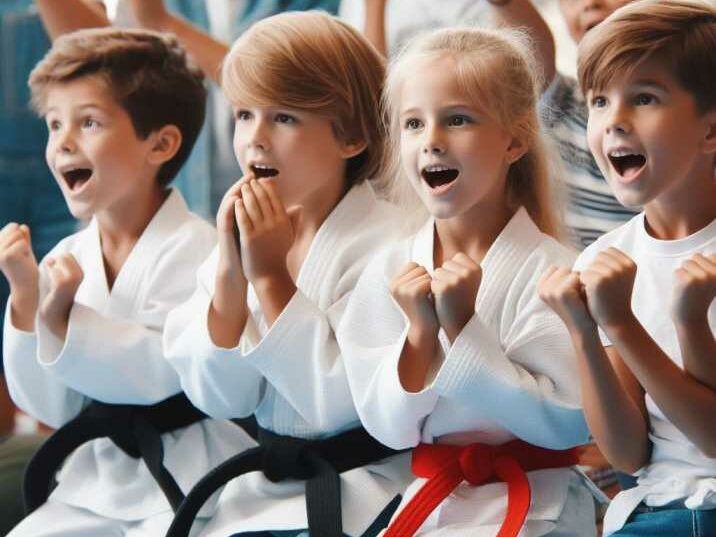Benefits of Kids Martial Arts
Table of Contents
Introduction:
In the dynamic landscape of extracurricular activities for children, Kids Martial Arts emerges as a powerhouse of holistic development. In this exploration, we’ll uncover the “7 Key Benefits of Kids Martial Arts,” shedding light on how this discipline transcends physical fitness to shape crucial life skills. One such avenue that has gained popularity in recent years is Kids Martial Arts. Beyond the physical aspects, these martial arts programs offer a holistic approach to child development. Let’s delve into the seven key benefits that make Kids Martial Arts an invaluable investment in your child’s growth

7 Key Benefits of Kids Martial Arts
1. Discipline and Focus:
In the fast-paced digital age, instilling discipline and focus in children can be challenging. Kids Martial Arts provides a structured environment where youngsters learn to follow instructions, respect their instructors, and stay focused on tasks. Through repetitive practice of techniques and forms, children develop a sense of discipline that transcends the dojo and permeates into other aspects of their lives.
2. Physical Fitness:
Childhood obesity is a growing concern, and Kids Martial Arts offers a solution by combining fun with physical activity. Through dynamic movements, kicks, and punches, children improve their cardiovascular health, strength, and coordination. The structured nature of martial arts classes ensures a comprehensive workout, promoting overall physical fitness and well-being.
3. Self-Confidence and Self-Esteem:
Benefits of Kids Martial Arts as Kids Martial Arts empowers children by teaching them to set and achieve goals. As they progress through belt ranks and master new techniques, their self-confidence and self-esteem soar. The supportive community within martial arts classes fosters a positive environment where each child’s achievements are celebrated, contributing to a strong sense of self-worth.
4. Social Skills and Teamwork:
In the journey of learning martial arts, children interact with peers, instructors, and parents. This social interaction cultivates important skills such as communication, teamwork, and cooperation. Kids Martial Arts classes often involve group activities and partner exercises, promoting a sense of camaraderie and teamwork that goes beyond the studio and into their daily lives.
5. Emotional Regulation:
Martial arts training emphasizes the importance of controlling one’s emotions, teaching children to channel their energy positively. The discipline required to perform intricate movements and the respect instilled for opponents and instructors contribute to emotional regulation. Children learn to handle success and failure with grace, an essential skill for navigating life’s challenges.
6. Bully Prevention and Self-Defense:
Bullying is a prevalent issue in schools, and Kids Martial Arts equips children with the skills and confidence to stand up for themselves. While the focus is on self-defense, martial arts training instills a sense of responsibility, emphasizing the importance of using these skills only when necessary. This knowledge not only enhances physical safety but also boosts mental resilience.
7. Goal Setting and Perseverance:
Setting and achieving goals is a fundamental aspect of martial arts training. Whether it’s mastering a new form, earning a higher belt, or participating in a competition, children learn the value of perseverance and hard work. These lessons translate into other areas of their lives, fostering a mindset that values effort and resilience in the face of challenges.
Conclusion:
In the journey of childhood development, Kids Martial Arts emerges as a multifaceted tool that goes beyond physical fitness. The seven key Benefits of Kids Martial Arts—discipline, physical fitness, self-confidence, social skills, emotional regulation, self-defense, and goal setting—form a comprehensive approach to shaping well-rounded individuals. By investing in Kids Martial Arts, parents not only contribute to their child’s physical health but also lay the foundation for essential life skills that will serve them well into adulthood.

Frequently Asked Questions:
- Q: How old should a child be to start martial arts? A: Many martial arts programs accept children as young as three, but the ideal age to start is generally between five and seven.
- Q: Is martial arts suitable for all children, including those with special needs? A: Yes, many martial arts schools offer inclusive programs tailored to accommodate children with special needs, fostering a supportive and encouraging environment.
- Q: Do children need any prior fitness level to join martial arts classes? A: No, martial arts classes are designed to accommodate children of all fitness levels. Classes gradually build physical fitness through structured training.
- Q: Are martial arts classes safe for children? A: Yes, reputable martial arts schools prioritize safety, with trained instructors supervising classes and ensuring that children practice techniques in a controlled environment.
- Q: How often should children attend martial arts classes? A: The frequency of classes depends on the child’s age and the martial art style. Generally, attending classes two to three times a week is recommended for optimal progress.
- Q: Can martial arts help improve a child’s focus in school? A: Yes, the discipline and focus instilled in martial arts classes often translate into improved concentration and academic performance.
- Q: Are there different types of martial arts suitable for children? A: Yes, there are various martial arts styles suitable for children, including karate, taekwondo, judo, and Brazilian jiu-jitsu. The choice depends on the child’s interests and goals



